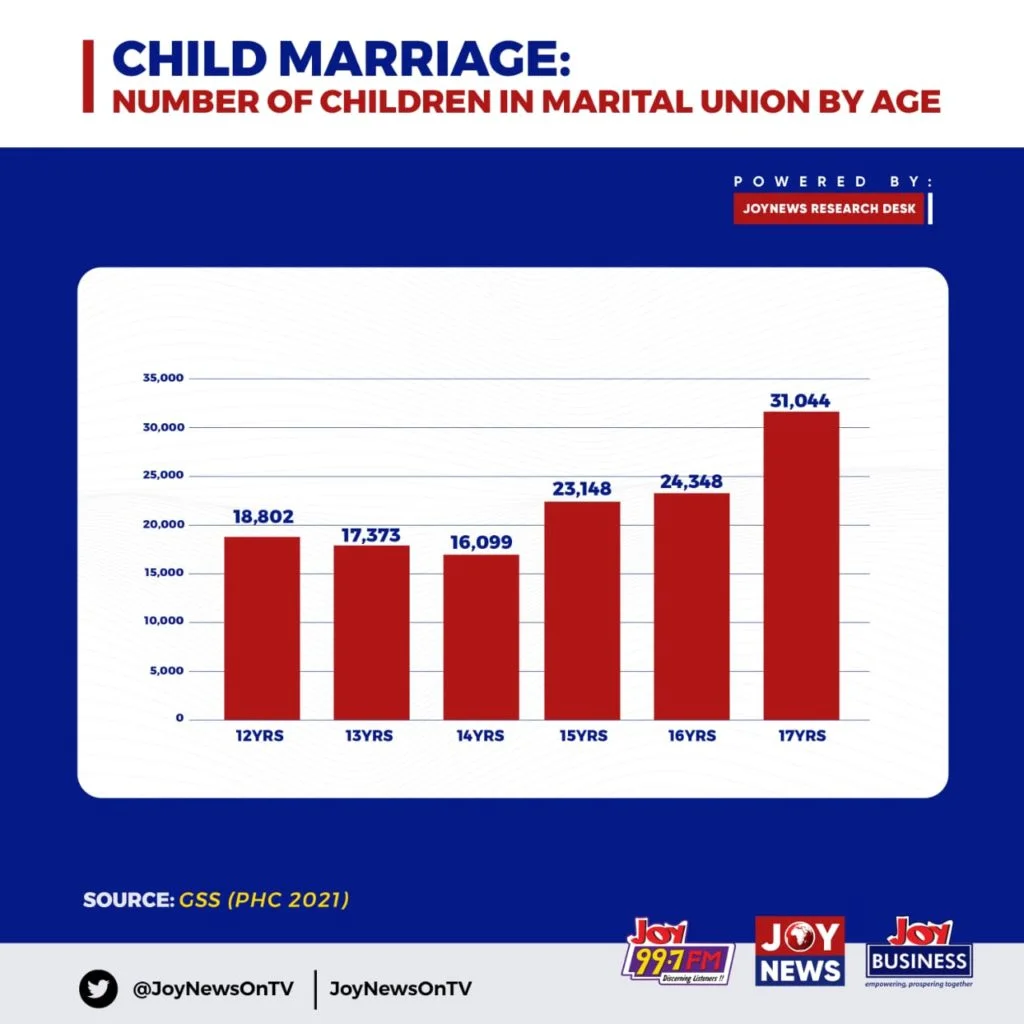Child marriage in Ghana declines by 36.6% between 2010 and 2021
In Ghana, there has been a significant drop in the number of children aged 12 to 17 who are currently or formerly married or living with a partner without formal recognition.
According to the Ghana Statistical Service (GSS), the number of minors who were married decreased from 206,633 in 2010 to 130,814 in 2021. This is a decline of 75,819, which represents a 36.6% decrease over the eleven-year period.
In 2010, there were 112,089 girls and 94,554 boys in these unions, with girls making up 54.2% and boys 45.8%. By 2021, the number of girls had dropped to 79,733, while the number of boys fell to 51,081. The data shows that 17-year-olds had the highest number of child marriages, with over 31,000 in this age group.
In 2021, the ratio of males to females in child marriages was 39% for men and 61% for women. Despite the overall decrease, GSS noted that children aged 12 to 15 in these unions still number more than five times the capacity of Legon Sports Stadium.
Although the total number of children in unions fell, over 100,000 children were still in such partnerships in 2021.
The national rate of child marriage has nearly halved in the last decade, but in five regions—Northern, North East, Savannah, Upper East, and Upper West—the rates actually increased from 2010 to 2021.
The North East region has the highest rate of child marriage, with one in every ten children aged 12 to 17 involved in a marital union.
To combat this issue, Ghana has developed a National Strategic Framework on Ending Child Marriage (2017–2026) and implemented several policies aimed at reducing child marriages, including the Gender Policy (2015), the Justice for Children Policy (2016), and the Child and Family Welfare Policy (2015).
These policies aim to provide a comprehensive approach to ending child marriage by addressing the underlying causes, such as poverty, lack of education, and cultural practices.
They focus on raising awareness, improving access to education for girls, and empowering communities to challenge harmful traditions.
The government and various organizations are working together to educate families about the negative impacts of child marriage on children’s health, education, and future opportunities.
Programs are also being implemented to provide support for at-risk children, helping them stay in school and avoid early marriage.
Community leaders, educators, and health workers are being trained to recognize the signs of child marriage and intervene when necessary.
By promoting the value of education and encouraging families to invest in their children’s future, these efforts seek to create a cultural shift that protects children from early marriage.
Despite the progress made, ongoing efforts are essential to ensure that the decline in child marriages continues. The focus remains on protecting the rights of children and ensuring that all young people have the opportunity to grow, learn, and thrive without the pressures of early marriage.
With continued commitment and action, Ghana aims to significantly reduce child marriage and promote a brighter future for its children.























